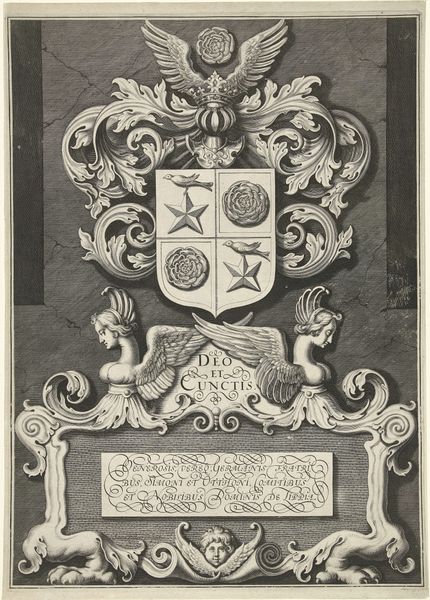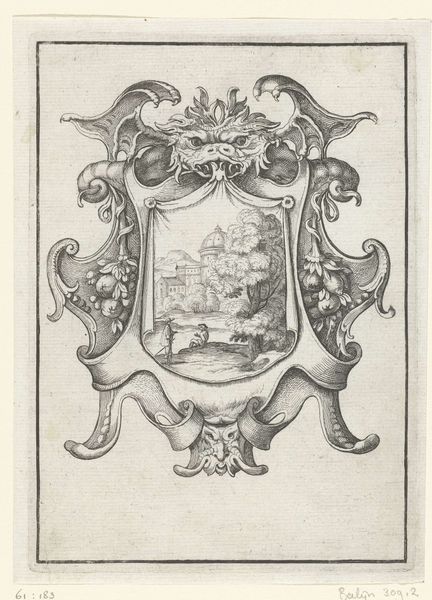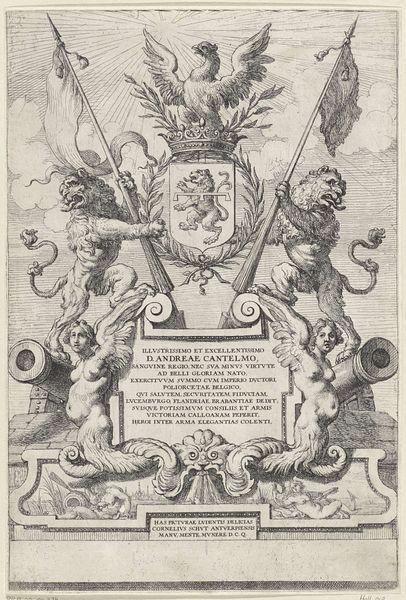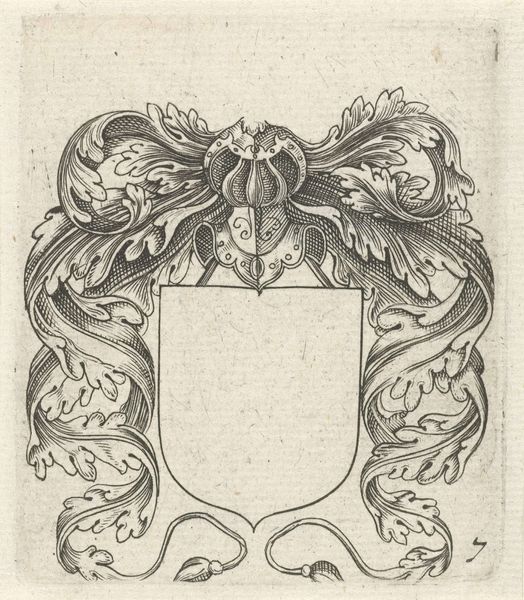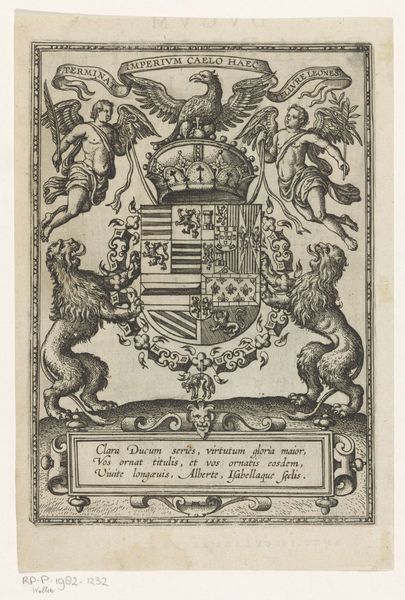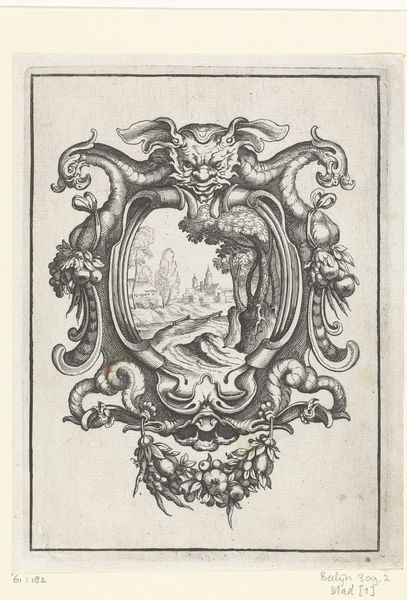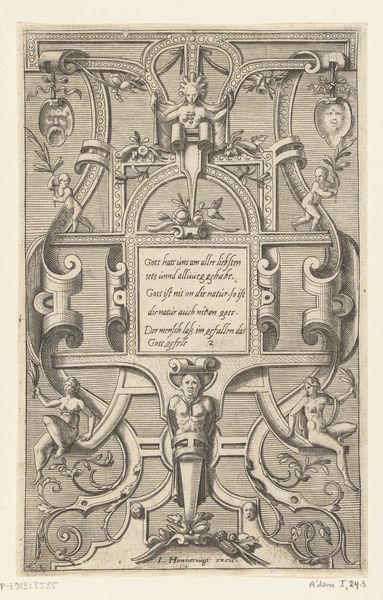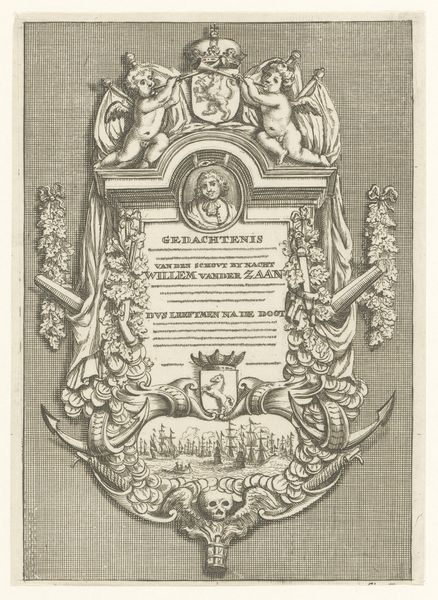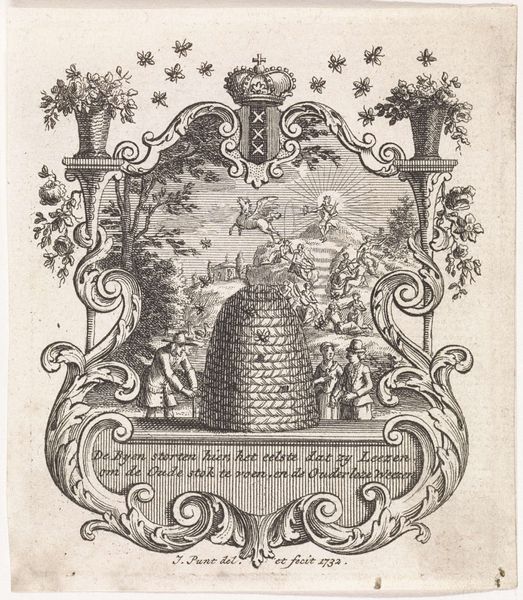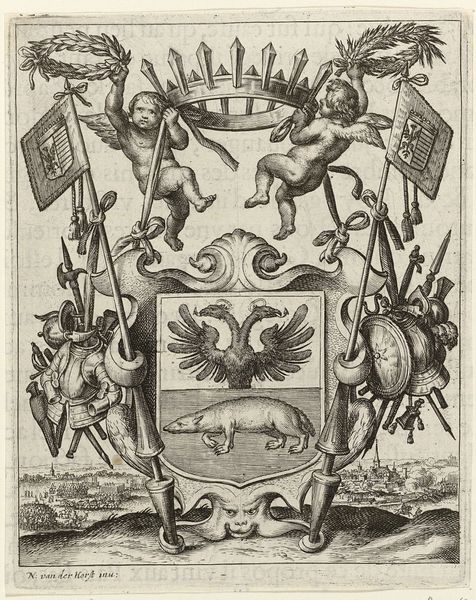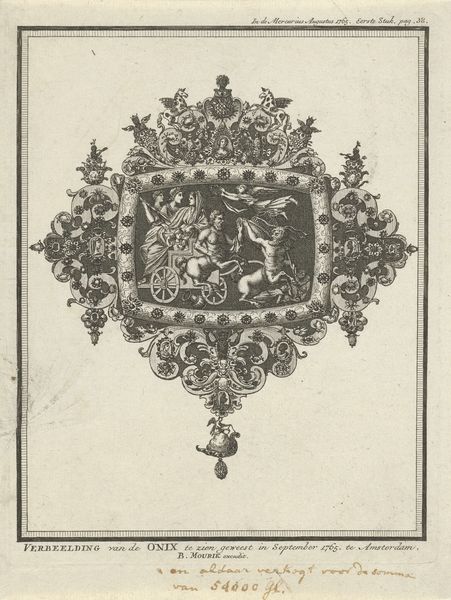
#
natural stone pattern
#
pen drawing
#
old engraving style
#
junji ito style
#
highly detailed
#
pen-ink sketch
#
pen work
#
coloring book page
#
doodle art
#
intricate and detailed
Dimensions: height 472 mm, width 338 mm
Copyright: Rijks Museum: Open Domain
Curator: This piece presents us with the "Wapen van Ernst Casimir, graaf van Nassau-Dietz," created around 1630 by Simon van de Passe. Currently, it resides in the collection of the Rijksmuseum. Editor: My immediate impression is one of incredibly detailed and rather baroque intricacy, all rendered in monochrome. It feels almost like an elaborate tattoo design. Curator: Indeed. What’s fascinating is the medium – it’s an engraving, likely intended for reproduction and distribution. Consider the socio-political implications: a mass-producible heraldic emblem reinforces power structures through visual display. Who was consuming these images and why? The availability of engravings made displaying your loyalty relatively cheap. Editor: Right. Beyond the immediate statement of power, I'm captivated by the layered symbolism. We have the lions on the shield of course, symbols of courage and royalty, combined with more obscure figures below such as what appears to be two half woman/half bird figures framing the dedicatory text at the bottom. The symbolism presents him as almost godlike figure, divine almost. Curator: Precisely! But let's consider the labor involved. Engraving, unlike painting, is a meticulous, almost industrial process. Each line is carved into a plate, demanding immense skill and time. What does that say about the value placed on Ernst Casimir’s image, that it demanded the resources of expert printmakers and engravers to create this idealized portrayal of leadership. Editor: I see your point. The visual weight feels inseparable from its production; the detail implying care. For me though, all this heraldry feels impersonal at first glance, yet these hybrid figures below convey this hidden language of aspiration and qualities attributed to a ruler. Even with the repeated lion imagery, there's a unique psychological depth I can't quite put my finger on. Curator: I think we both find different forms of ‘labor’ represented in this one singular artwork – in the production itself, and the projection of symbolic power it represented and enacted. Editor: Definitely a work where material craft and image collide in a fascinating historical echo.
Comments
No comments
Be the first to comment and join the conversation on the ultimate creative platform.
